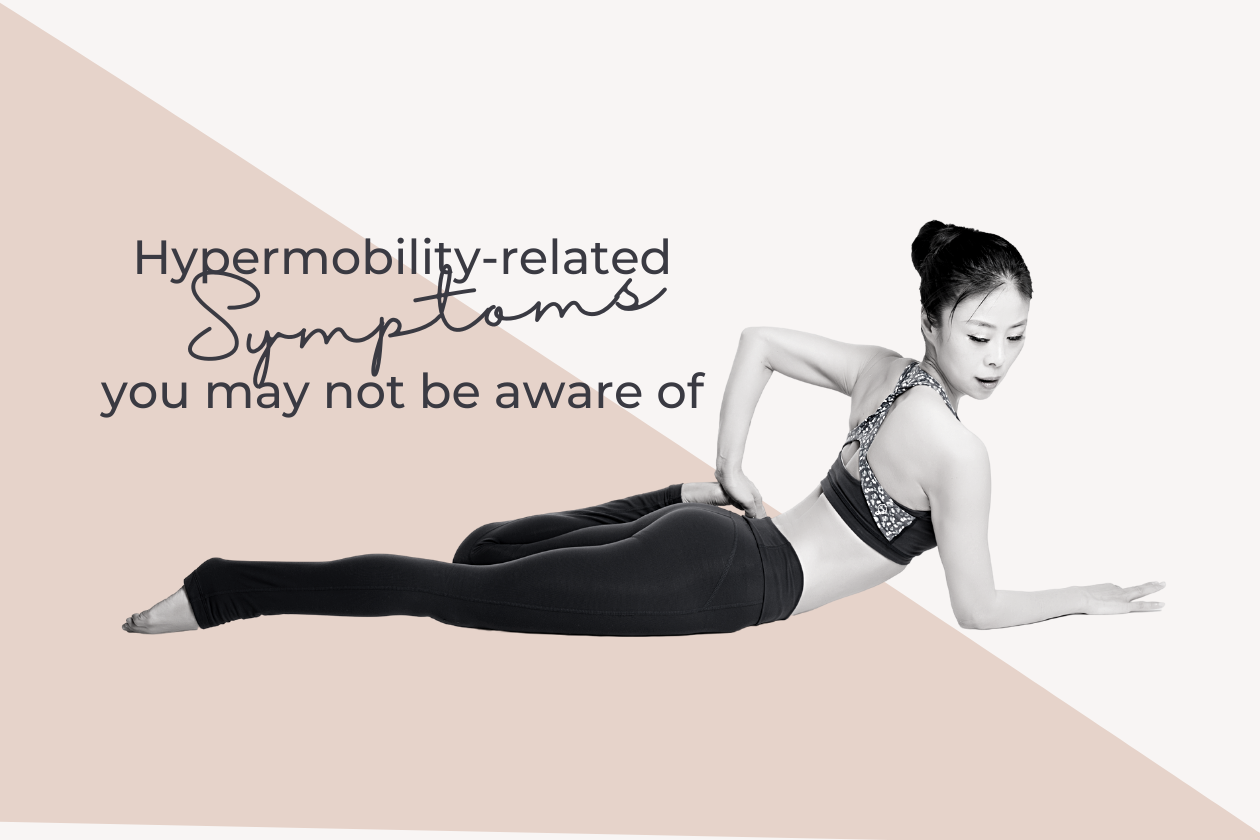For many years I never considered the possibility that I could be hypermobile because I often felt tight and stiff in my body, I could never touch my fingers to toes in standing, and I could not do the splits (you don't have to do the splits to be hypermobile).
It is estimated that hypermobility spectrum disorder (HSD) affects 10-20% of the general population, and it is more common in females than males by a ratio of 3:1. This estimate goes up to 50% within certain groups such as those with neurodivergence, which suggests a link between hypermobility and neurodiversity. Further research has shown close genetic clustering between patients with hypermobility and neurodivergence. Hypermobility is also more commonly found in performing arts such as music and dance where hypermobility can often be an advantage.
Below are symptoms that can be associated with hypermobility and is not an exhaustive list. Always check with your doctor if you have any of these symptoms to rule out other medical causes. This post is for informational purposes only and should not replace individual medical advice.
Hypermobility-related symptoms:
- Feeling of being lopsided, twisted, uneven (and can have symptoms in multiple joints more on one side of the body)
- Feeling of instability
- Aches and pains in muscles and joints
- Tightness and stiffness (often in the hamstrings and upper back)
- Chronic pain, fibromyalgia
- Recurrent sprains or injury
- Reduced balance, coordination, and proprioception
- Easy bruising
- Delayed tissue healing
- Jaw pain and/or dental issues
- Gut issues (e.g. IBS or food intolerances)
- Clenching or grinding teeth at night
- Insomnia or difficulty sleeping
- Fatigue and tiredness, chronic fatigue syndrome, stigmatized as "lazy"
- Clicking joints
- Anxiety or issues with mood
- Headaches or migraines
- Autoimmune conditions such as thyroid problems or rheumatoid arthritis
- Sensory sensitivities (e.g. to noise, smells, touch - e.g. dislike scratchy clothes)
- Musculoskeletal symptoms often disregarded as “postural”
- This is more of a side observation: tend to describe fairly stressful life and can be quite hard on themselves (e.g. pushing themselves to do more or be more, taking on more than their capacity, or feel like they’re not doing enough, suffer burnout)
As you can see, there are multiple issues that can co-exist due to hypermobility and each can impact on another. For example, not sleeping well can lead to feeling more fatigued and your body not being able to heal as well because sleep is necessary for our bodies to rest and repair. Anxiety is also a big factor that can impact musculoskeletal problems as it can often change your breathing pattern, which I'll expand on more in a separate post.
It is important to remember that hypermobility exists on a spectrum and that everyone experiences it differently. If you struggle with hypermobility-related symptoms, you are not alone.
It feels hard because it is hard.
It is hard when you don't understand why your body doesn't do what you want it to do.
It is hard when your body doesn't seem to function like other people's.
It is hard to deal with chronic pains and fatigue that limit you from doing the things you love.
It is hard to have your sensory sensitivities mistaken for you being "fussy", "difficult", or "too much".
I see your struggle because I've been there. But there is hope.
The hypermobile brain and body function differently. The key is understanding this difference so that you can look after your well-being in a way that best suits your individual needs.
On this journey with you,
Sharon
References:
- Kelly et al 2022. The Links Between Fibromyalgia, Hypermobility and Neurodivergence
- Csecs et al 2022. Joint Hypermobility Links Neurodivergence to Dysautonomia and Pain
- Sharp et al 2021. Connecting Brain and Body: Transdiagnostic Relevance of Connective Tissue Variants to Neuropsychiatric Symptom Expression


